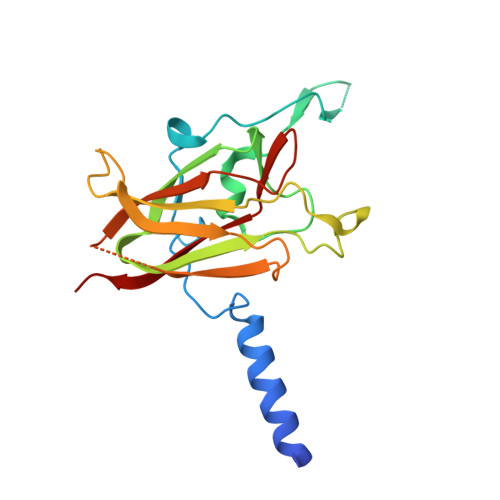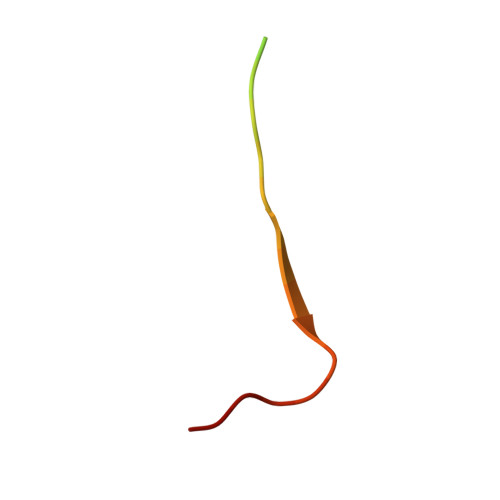Structural Analysis of Different LINC Complexes Reveals Distinct Binding Modes.
Cruz, V.E., Esra Demircioglu, F., Schwartz, T.U.(2020) J Mol Biol 432: 6028-6041
- PubMed: 33058875
- DOI: https://doi.org/10.1016/j.jmb.2020.09.019
- Primary Citation of Related Structures:
6WMD, 6WME, 6WMF, 6WMG - PubMed Abstract:
Linker of nucleoskeleton and cytoskeleton (LINC) complexes are molecular tethers that span the nuclear envelope (NE) and physically connect the nucleus to the cytoskeleton. They transmit mechanical force across the NE in processes such as nuclear anchorage, nuclear migration, and homologous chromosome pairing during meiosis. LINC complexes are composed of KASH proteins traversing the outer nuclear membrane, and SUN proteins crossing the inner nuclear membrane. Humans have several SUN- and KASH-containing proteins, yet what governs their proper engagement is poorly understood. To investigate this question, we solved high resolution crystal structures of human SUN2 in complex with the KASH-peptides of Nesprin3, Nesprin4, and KASH5. In comparison to the published structures of SUN2-KASH1/2 we observe alternative binding modes for these KASH peptides. While the core interactions between SUN and the C-terminal residues of the KASH peptide are similar in all five complexes, the extended KASH-peptide adopts at least two different conformations. The much-improved resolution allows for a more detailed analysis of other elements critical for KASH interaction, including the KASH-lid and the cation loop, and a possible self-locked state for unbound SUN. In summary, we observe distinct differences between the examined SUN-KASH complexes. These differences may have an important role in regulating the SUN-KASH network.
Organizational Affiliation:
Department of Biology, Massachusetts Institute of Technology, Cambridge, MA 02139, USA.
















